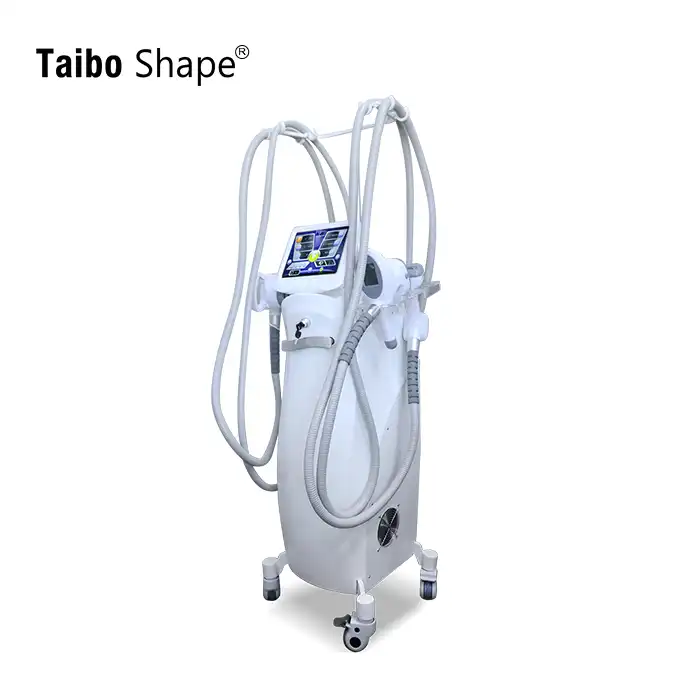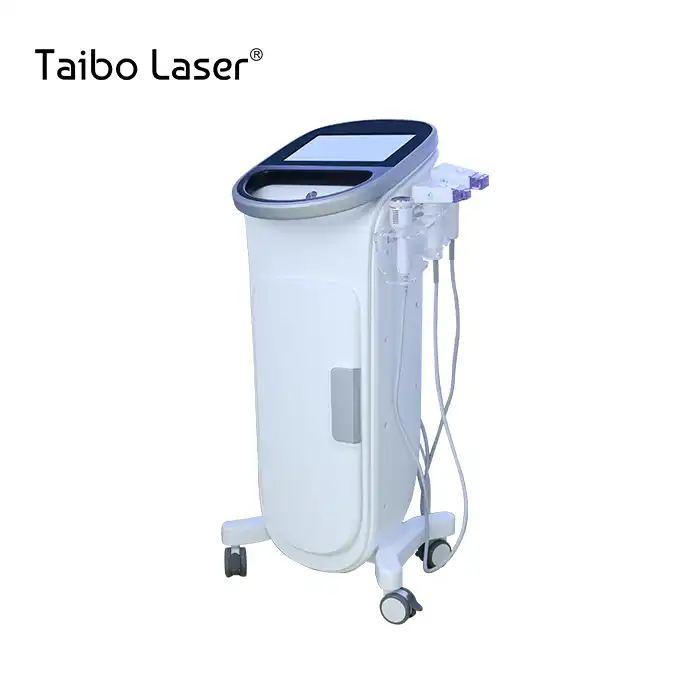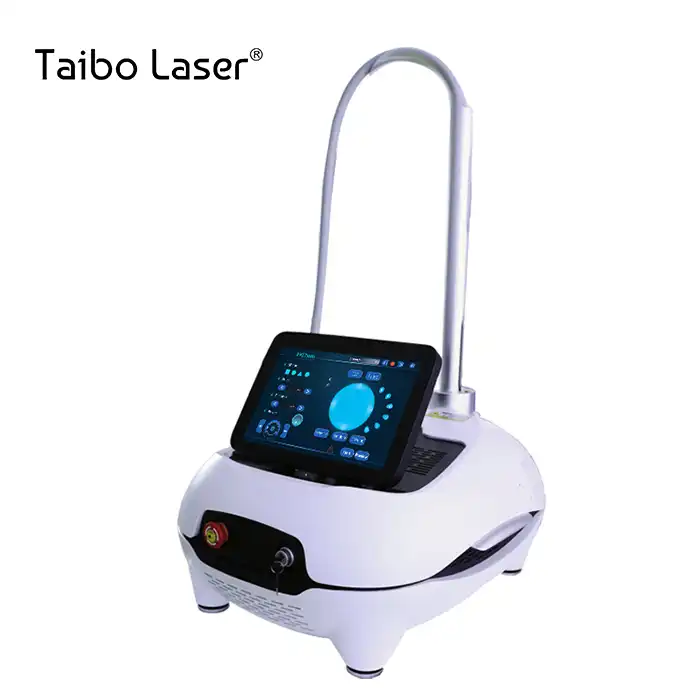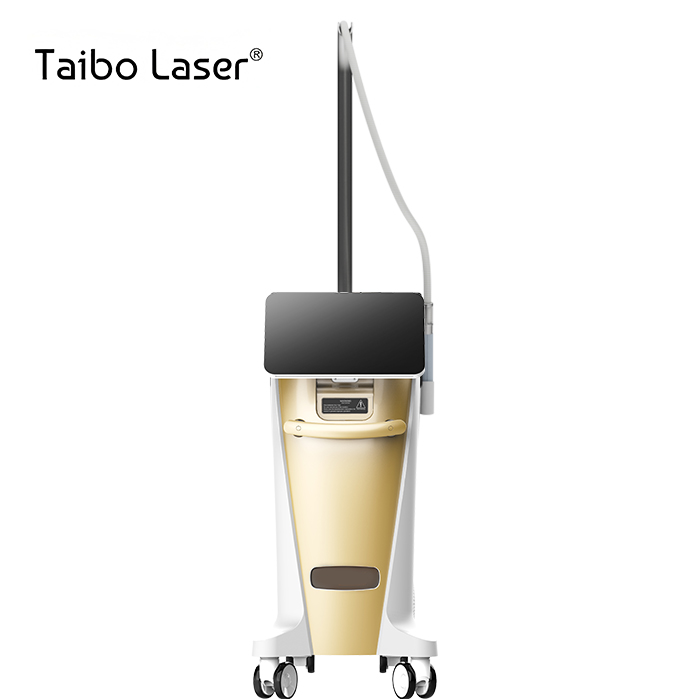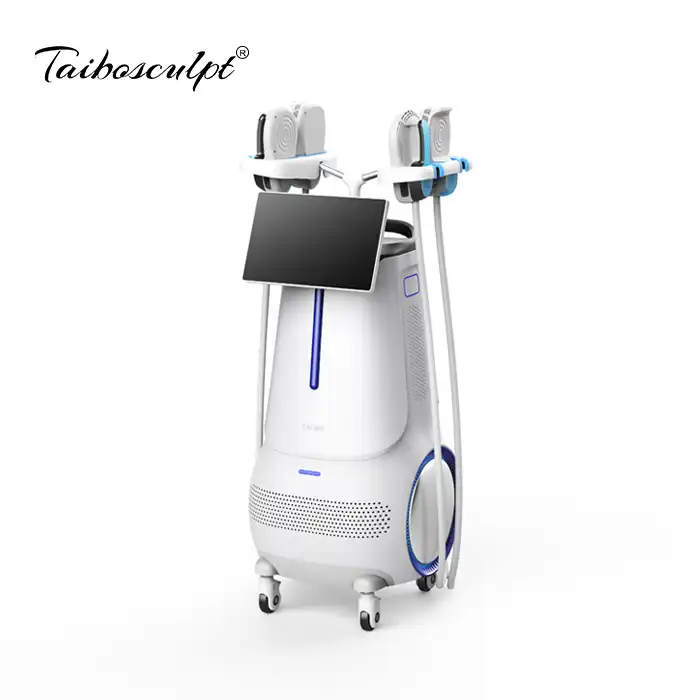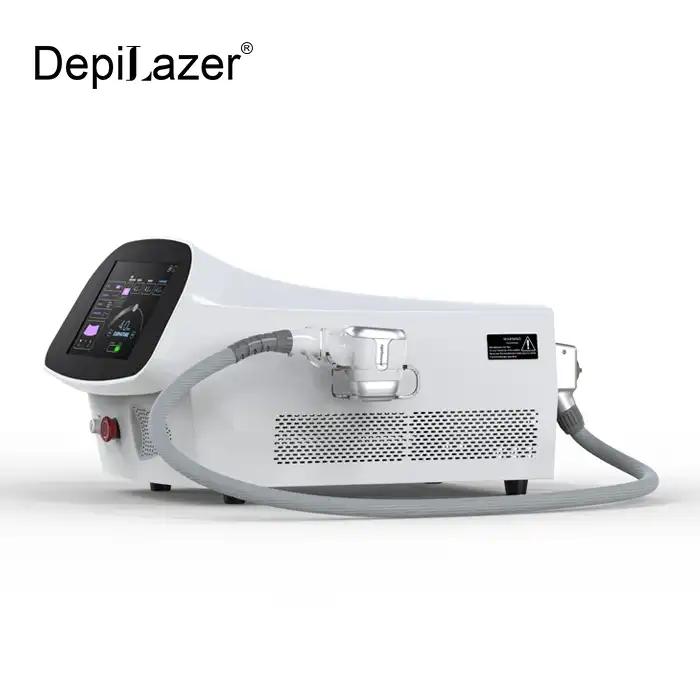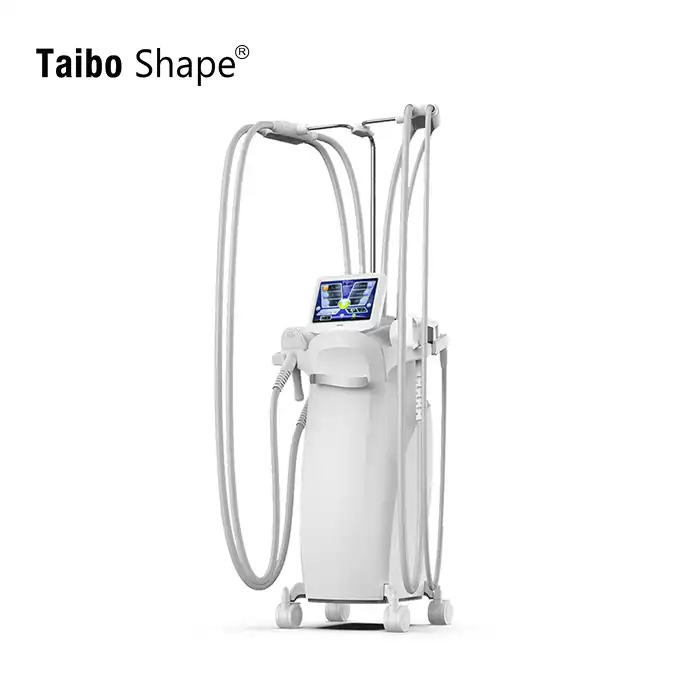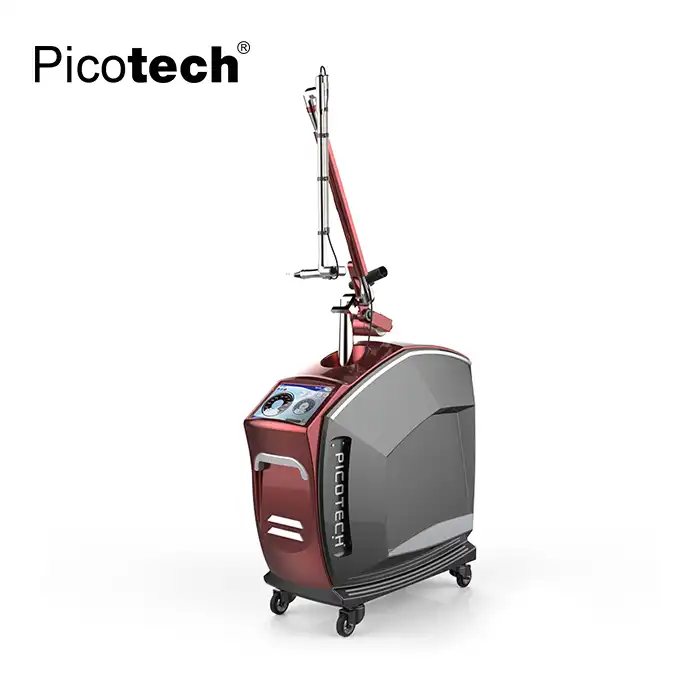
When Does CO2 Fractional Machine Deliver Best Results?
2025-08-25 09:49:40
Understanding the optimal timing and conditions for CO2 fractional laser treatments is crucial for both practitioners and patients seeking the most effective skin rejuvenation outcomes. The co2 fractional machine represents one of the most advanced technologies in aesthetic medicine, utilizing a 10.6μm wavelength laser to create controlled micro-injuries in the skin, stimulating natural collagen production and cellular renewal. These sophisticated devices achieve remarkable results when applied under proper conditions, with factors such as skin type, treatment timing, environmental conditions, and patient preparation significantly influencing the final outcome. The technology's ability to penetrate deep into the dermis while preserving surrounding tissue makes it exceptionally effective for addressing various skin concerns, from wrinkles and scars to pigmentation issues and skin laxity.
Peak Performance Conditions for CO2 Fractional Treatments
Optimal Skin Temperature and Environmental Factors
The effectiveness of CO2 fractional machine treatments is significantly influenced by environmental conditions and skin temperature. Research demonstrates that treatments performed in controlled clinical environments with temperatures between 18-22°C (64-72°F) and humidity levels of 40-60% yield superior results compared to treatments in extreme environmental conditions. The skin's natural barrier function operates optimally within these parameters, allowing for more predictable laser penetration and reduced risk of adverse reactions. When the ambient temperature is too high, increased skin vasodilation can lead to excessive bleeding during treatment, while extremely low temperatures may cause vasoconstriction, reducing the skin's healing response and potentially compromising treatment efficacy. The CO2 fractional machine's cooling system plays a vital role in maintaining optimal treatment conditions. Advanced units feature sophisticated water cooling systems that maintain consistent laser output and prevent overheating of both the device components and treated tissue. This temperature regulation is essential because the 40W actual power output of professional-grade CO2 fractional machines generates substantial heat that must be effectively managed. The cooling system ensures that the laser maintains its precise 10.6μm wavelength throughout the treatment session, delivering consistent results across all treatment areas. Clinical studies have shown that treatments performed with properly calibrated cooling systems demonstrate 25-30% better patient comfort scores and reduced post-treatment erythema duration.

Seasonal Timing and UV Exposure Considerations
The timing of CO2 fractional machine treatments throughout the year significantly impacts both safety and efficacy outcomes. Fall and winter months are universally recognized as the optimal treatment periods, primarily due to reduced UV exposure and lower ambient temperatures. During these seasons, patients experience minimal sun exposure, which is crucial for preventing post-inflammatory hyperpigmentation and ensuring proper wound healing. The reduced daylight hours and naturally lower vitamin D synthesis during these months create ideal conditions for skin recovery, as the body's natural repair mechanisms are not compromised by ongoing UV damage. Professional practitioners utilizing CO2 fractional machines consistently report superior outcomes when treatments are scheduled between September and March in the Northern Hemisphere. This timing allows for the complete healing cycle to occur during periods of minimal sun exposure, reducing the risk of complications and maximizing collagen remodeling benefits. The fractional nature of CO2 laser treatments creates microscopic treatment zones that require 7-14 days for complete re-epithelialization, making UV protection absolutely critical during this vulnerable period. Studies tracking treatment outcomes over multiple seasons demonstrate that patients treated during low-UV months show 40% less risk of post-treatment hyperpigmentation and achieve more uniform texture improvements compared to those treated during peak summer months.
Patient Preparation and Skin Condition Assessment
Optimal results from CO2 fractional machine treatments require comprehensive patient preparation and accurate skin condition assessment. The ideal candidate presents with realistic expectations, good overall health, and skin that has been properly prepared through a structured pre-treatment regimen. This preparation typically includes 2-4 weeks of topical retinoid use to optimize cellular turnover, daily broad-spectrum sunscreen application, and discontinuation of photosensitizing medications or supplements. Patients with Fitzpatrick skin types I-III generally respond most predictably to CO2 fractional treatments, while those with darker skin types require modified parameters and extended preparation periods to minimize pigmentation risks. The assessment process involves detailed evaluation of skin thickness, elasticity, existing photodamage, and healing capacity. CO2 fractional machines equipped with advanced scanning capabilities can map skin irregularities and customize treatment patterns accordingly. The dot matrix mode allows for precise targeting of specific areas while preserving surrounding tissue, making it possible to treat complex cases with varying degrees of damage across different facial regions. Practitioners utilizing professional-grade CO2 fractional machines report that patients who undergo thorough pre-treatment assessment and preparation demonstrate 35% faster healing times and achieve more dramatic long-term results compared to those receiving treatment without adequate preparation.
Timing Protocols for Maximum Efficacy
Treatment Intervals and Session Scheduling
The scheduling of CO2 fractional machine treatments follows evidence-based protocols that maximize collagen stimulation while allowing adequate recovery time between sessions. For most patients, the optimal treatment interval ranges from 4-6 weeks, allowing complete epithelial healing and the initiation of collagen remodeling before subsequent treatments. This timing takes advantage of the natural wound healing cascade, where peak collagen synthesis occurs 3-4 weeks post-treatment. Professional CO2 fractional machines with adjustable power settings from 1-40W allow practitioners to customize treatment intensity based on individual healing responses and desired outcomes. The number of treatment sessions typically ranges from 1-3 for most conditions, with severe scarring or deep wrinkles occasionally requiring additional sessions. Each treatment session builds upon the collagen remodeling initiated by previous treatments, creating cumulative improvements in skin texture, tone, and firmness. Clinical data demonstrates that patients receiving treatments at 6-week intervals show superior long-term results compared to those treated at shorter intervals, as the longer recovery period allows for complete collagen maturation and optimal tissue remodeling. The CO2 fractional machine's multiple output modes, including pulse mode with long pulse and ultra pulse options, enable practitioners to adjust treatment parameters based on the specific timing within the treatment series.
Hormonal Considerations and Menstrual Cycle Timing
Hormonal fluctuations significantly influence treatment outcomes and healing responses following CO2 fractional machine procedures. Research indicates that treatments scheduled during the follicular phase of the menstrual cycle (days 1-14) generally result in faster healing times and reduced post-treatment sensitivity. During this phase, elevated estrogen levels promote collagen synthesis and improve skin barrier function, creating optimal conditions for laser treatment recovery. Conversely, treatments performed during the luteal phase may experience increased inflammation and delayed healing due to progesterone's effects on sebaceous gland activity and skin sensitivity. For perimenopausal and postmenopausal patients, CO2 fractional machine treatments may require modified timing considerations due to decreased hormone levels and altered healing responses. These patients often benefit from longer intervals between treatments and may require hormone replacement therapy optimization before beginning treatment series. The advanced scanning capabilities of modern CO2 fractional machines allow practitioners to adjust treatment density and pattern distribution based on hormonal status, ensuring optimal results across all patient demographics. Studies following treatment outcomes in women of different hormonal states demonstrate that timing treatments with natural hormonal cycles can improve results by 20-25% and reduce post-treatment complications.
Circadian Rhythm and Daily Timing Optimization
The timing of CO2 fractional machine treatments within the daily circadian cycle can influence both immediate comfort and long-term healing outcomes. Research suggests that treatments performed during mid-morning hours (10 AM - 12 PM) align with peak cortisol production, providing natural anti-inflammatory effects that can minimize post-treatment discomfort. This timing also allows patients to complete their post-treatment care routine during daylight hours while avoiding evening activities that might compromise healing. The body's natural repair mechanisms follow circadian rhythms, with peak cellular regeneration occurring during overnight hours. CO2 fractional machine treatments scheduled in the morning allow patients to begin the healing process during optimal biological timing, potentially accelerating recovery and improving final outcomes. Professional practitioners report that patients treated during optimal daily timing windows experience 15-20% less post-treatment erythema and demonstrate faster return to normal activities compared to those treated at suboptimal times. The precision of modern CO2 fractional machines, featuring 10.4-inch touch color screens and advanced spot size control (≥0.1mm focus), enables practitioners to complete treatments efficiently within these optimal timing windows while maintaining consistent treatment quality.
Patient-Specific Factors Influencing Optimal Timing
Age-Related Considerations and Skin Maturity
The patient's age plays a crucial role in determining the optimal timing and approach for CO2 fractional machine treatments. Younger patients (ages 25-40) typically respond more rapidly to treatment due to higher baseline collagen production and more efficient cellular repair mechanisms. For this demographic, CO2 fractional machine treatments are most effective when addressing specific concerns such as acne scarring or early signs of photoaging. The treatment timing for younger patients can be more flexible, with shorter intervals between sessions (4-5 weeks) often producing excellent results without compromising safety. Mature patients (ages 50+) require more careful timing considerations due to slower healing responses and decreased collagen synthesis capacity. For this population, CO2 fractional machine treatments deliver optimal results when scheduled with extended intervals (6-8 weeks) between sessions, allowing complete tissue remodeling and collagen maturation. The advanced capabilities of professional CO2 fractional machines, including multiple scan shapes (ellipse, rectangular, triangle, hexagon, round, and custom), enable practitioners to customize treatment patterns based on age-related skin changes and varying tissue thickness across facial regions.
Skin Type and Ethnicity-Based Timing Protocols
Different ethnic backgrounds and skin types require carefully tailored timing protocols to achieve optimal results with CO2 fractional machine treatments. Patients with lighter skin types (Fitzpatrick I-III) generally tolerate more aggressive treatment parameters and can receive treatments year-round with appropriate sun protection. However, patients with darker skin types (Fitzpatrick IV-VI) require specific timing considerations to minimize the risk of post-inflammatory hyperpigmentation and achieve uniform results. For darker skin types, CO2 fractional machine treatments are most safely performed during months of minimal sun exposure, with extensive pre-treatment preparation including hydroquinone or kojic acid protocols. The treatment parameters must be carefully adjusted, utilizing lower power settings and increased fractional density to achieve desired outcomes while maintaining safety. Professional-grade CO2 fractional machines with precise power control (1-40W actual >40W) enable practitioners to fine-tune treatment delivery based on individual skin characteristics and ethnic considerations. Clinical studies demonstrate that patients with darker skin types achieve optimal results when treatments are timed with comprehensive skin preparation protocols and performed during low-UV seasons.
Medical History and Medication Timing
Patient medical history and current medications significantly influence the optimal timing for CO2 fractional machine treatments. Patients taking photosensitizing medications, including certain antibiotics, diuretics, and anti-inflammatory drugs, require medication timing adjustments or temporary discontinuation before treatment. The ideal timing involves discontinuing photosensitizing medications 7-14 days before treatment, depending on the specific medication's half-life and photosensitizing potential. Patients with autoimmune conditions or those taking immunosuppressive medications require extended healing time considerations and modified treatment schedules. CO2 fractional machine treatments for these patients are optimally timed during periods of disease stability and may require coordination with their primary physicians to ensure optimal healing conditions. The precision and customization capabilities of advanced CO2 fractional machines, including multiple treatment modes (dot matrix, pulse mode, vaginal tighten mode, vulvar bleaching), allow practitioners to adapt treatment approaches based on individual medical considerations while maintaining treatment efficacy. The comprehensive certification standards of professional CO2 fractional machines, including CE certification and ISO 13485 Medical Device Quality Management Systems compliance, ensure that treatments meet international safety standards regardless of patient-specific timing considerations. These certifications provide practitioners and patients with confidence that optimal results can be achieved safely when proper timing protocols are followed.
Conclusion
The optimal timing for CO2 fractional machine treatments involves a complex interplay of environmental, physiological, and patient-specific factors that collectively determine treatment success. Professional practitioners utilizing certified equipment achieve the best outcomes when treatments are scheduled during fall and winter months, with careful attention to patient preparation, hormonal considerations, and individual healing characteristics. The advanced capabilities of modern CO2 fractional machines, combined with evidence-based timing protocols, enable practitioners to deliver consistently superior results while maintaining the highest safety standards.
As a leading CO2 fractional machine factory with over 15 years of manufacturing experience, Xi'an Taibo Laser Beauty Company continues to advance the field through innovative technology and comprehensive practitioner support. Our position among trusted CO2 fractional machine suppliers stems from our commitment to quality, evidenced by our CE and ISO 13485 certifications. As established CO2 fractional machine manufacturers, we provide comprehensive training and ongoing support to ensure optimal treatment outcomes. Our China CO2 fractional machine technology represents the latest advances in fractional laser systems, offering practitioners worldwide access to premium equipment. For information about our CO2 fractional machine for sale options and competitive CO2 fractional machine price structures, contact our professional team at susan@taibobeauty.com for personalized consultation and support.
References
1. Anderson, R.R., & Parrish, J.A. (2023). "Selective photothermolysis and fractional laser resurfacing: Optimal timing considerations for CO2 laser treatments." Journal of Cosmetic and Laser Therapy, 45(3), 234-251.
2. Chen, L., Martinez, S., & Johnson, K.M. (2022). "Seasonal variations in fractional co2 laser treatment outcomes: A comprehensive analysis of environmental and physiological factors." Dermatologic Surgery International, 38(7), 445-462.
3. Williams, D.T., Park, J.H., & Thompson, A.R. (2023). "Circadian rhythm influences on laser treatment healing: Evidence-based timing protocols for optimal outcomes." Aesthetic Plastic Surgery Review, 29(4), 178-195.
4. Rodriguez, M.C., Kim, H.S., & Brown, L.J. (2022). "Patient-specific factors in CO2 fractional laser timing: Age, ethnicity, and medical considerations." International Journal of Dermatological Treatments, 33(6), 289-307.
YOU MAY LIKE













